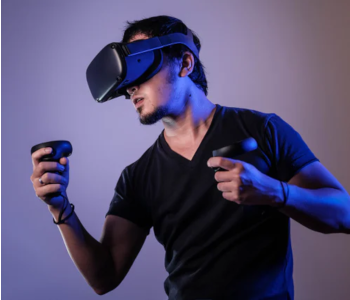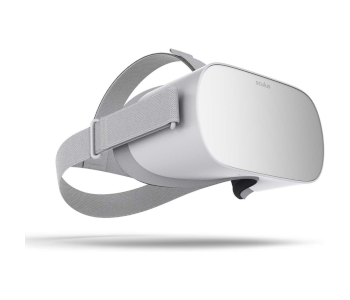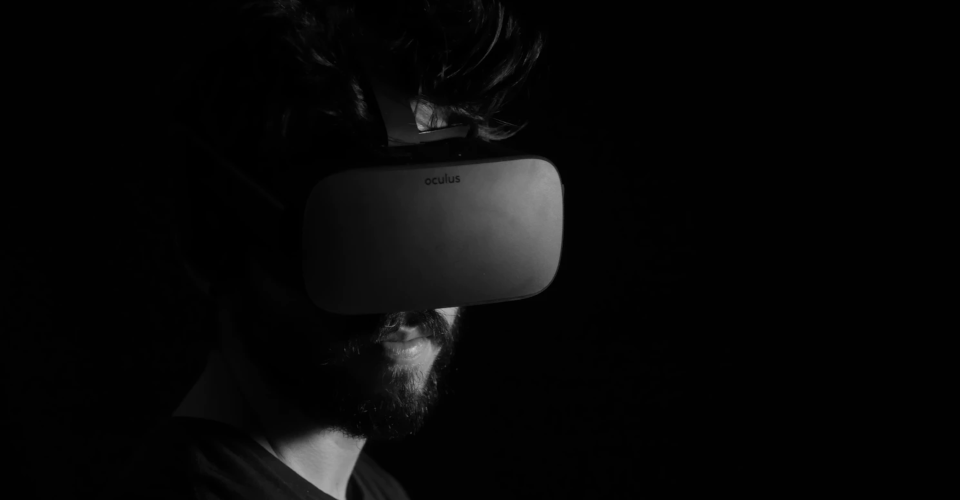Virtual Reality as the Next Frontier for Mental Healthcare
The acknowledgment and understanding of mental health have greatly improved in the last couple of years. Now, more than ever, people are encouraged to take care of their mental welfare and seek treatment if needed. It does not mean that the stigma has been completely eliminated – some people still find it uncomfortable to speak with mental health professionals.
One technology that is being explored for an alternative means of mental healthcare is virtual technology. This is not a new concept but there has been immense growth in interest in the topic recently. What exactly can VR offer for mental healthcare?
Not a new concept

The use of VR as a means for mental health therapy is actually not a new idea. It has been used as early as the mid-90s primarily to address anxiety disorders or phobias. The premise behind the idea is that the patient can be exposed to their primary source of fear gradually and in a safe environment. The fear stimulus can then be increased incrementally, slowly reducing the response of the patient.
This particular use case highlights many of the benefits of a VR-based treatment. Aside from having to face their fears in a safe environment, the VR approach eliminates the need to travel to another physical location where these fears can be confronted. Imagine being able to confront a fear of flight using a VR experience instead of actually getting on an aircraft. This lessens any anxiety from the patient of being seen in public and is also a more practical and less expensive alternative.
This approach to VR therapy is still widely practiced today by specialist centers like the Medical Centre in California and the Center for Treatment of Anxiety and Mood Disorders
A diverse treatment method
With many studies supporting the use of VR for exposure treatment, there is now a growing movement to adopt VR technology to treat more types of mental health disorders. Potential conditions that can be addressed by VR include post-traumatic stress disorder (PTSD), autism, schizophrenia, dementia, and stress.
PTSD

Treatment of PTSD has become a field of concern for psychologists, mainly because of the growing number of military personnel suffering from the condition. However, not all cases of PTSD involve war or combat situations. Any person who has gone through a traumatic event can have their quality of life suffer because of PTSD. People with PTSD are prone to bouts of anger, agitation, anxiety, and depression.
VR treatment of PTSD is based on habituation therapy. With this method, patients can go through controlled environments that mimic the source of their PTSD. With the guidance of the therapist, the patient can process the memories and resolve any symptoms. This approach is similar to traditional cognitive behavior therapy but VR provides a much more immersive environment.
The Bravemind VR package is a high-profile example of the use of VR for PTSD treatment. This VR package consists of 14 customizable virtual worlds that were specifically treated to help US war veterans revisit the memories that are the source of their PTSD. Bravemind is currently used in over 50 sites including hospitals, university centers, and military bases.
Stress
In today’s high-paced and competitive environment, the condition of mental stress has become severely diluted. However, the evidence of stress as a cause for physiological conditions is indisputable. According to the American Institute of Stress, up to 77% of people suffer from stress that affects their physical health while 48% have reported that stress has caused them to have trouble sleeping.
There are a lot of research initiatives that focus on how VR experiences can help alleviate stress. Fortunately, there are also lots of VR apps that promote relaxation. A good example is DEEP, a meditative virtual reality game that is controlled by the user’s breathing.
One study uses EEG scanning to detect electrical activity in the brains of patients while they partake in a custom VR experience for relaxation. The results showed that not only did the patients get a sense of relaxation, but their task-based performance also enhanced after the exercise.
The benefit of stress reduction as an aid for physical therapy has been explored in the Cedars-Sinai Hospital. Chronic patients were given VR headsets so that they can explore natural scenery even if they cannot step out of the hospital. This has resulted in a mean pain reduction in the population that was exposed to VR, possibly providing an alternative to traditional pain treatment.
Autism

Autism, a childhood developmental condition, can cause patients to have difficulty in interacting with others. With diminished concentration and less skill in identifying social cues, autistic children often find it hard to develop functional skills useful in daily life.
The Northwestern University Psychiatry Department has developed a VR-based training program for young adults with autism. The program places them in somewhat difficult social situations like job interviews or meetings with colleagues. During the experience, the brain activity of the patient is monitored using EEG and brain imaging. The results of the study suggest that young adults with autism have a higher job search success rate after the training.
There are also other modules that can help autism patients with daily social situations, such as navigating a virtual city by riding a bus. Through these activities, children with autism can confront the anxiety of real-world situations in a safer environment.
VR has also been used to allow people to experience the world as it appears to a person with autism. Apps like Beholder and Don’t Panic simulate the isolation and sensory overload that an autistic person experiences so that other people can empathize with them better. This stresses that autism is not a disorder that can be treated – autistic people simply learn to live with the disorder and are every bit deserving of some extra understanding.
Dementia and Alzheimer’s
VR can be used both for the diagnosis and treatment of neurodegenerative conditions like Alzheimer’s and dementia. Evaluation of cognitive dysfunction using VR environments has been found to be very accurate. An example of a VR app for diagnosis included an app that tested the patient’s navigation skills.
Treatment of patients with cognitive dysfunction addresses the onset of behavioral and psychological symptoms of dementia (BPSD) through approaches such as recall therapy, music therapy, art therapy, or physical exercise. However, offering such treatments is difficult because of the low number of qualified professionals. VR technology can fill this gap by providing safe and adaptable experiences that are also easy to use.
In a study conducted in South Korea, VR experiences were crafted that will evoke positive feelings in the patients. These experiences included visiting a nostalgic place, going on a vacation, playing in a river, or walking in a breezy field. Music and natural sounds enhance the virtual environments. There were no intellectual demands built into the experiences.
The experiences were found to reduce BPSD by up to 36.9%. The activities that focused on “comfort” were found to be the most effective. These included walking, holding hands, eating snacks, and staying in a quiet environment.
Schizophrenia

There have been numerous research initiatives that have sought to address the symptoms of schizophrenia including hallucinations, psychosis, and social anxiety.
The most common approach is to use VR to put patients in a variety of social situations. These situations can be varied from benign to hostile. Such exercises were found to reduce the patients’ feelings of anxiety and paranoia, although the results were only apparent after the 24-week follow-up.
To treat delusions and hallucinations, the patients were placed in a virtual environment which became progressively more uncomfortable for them. The point of the exercise was to train the patients to not resort to safety-seeking behaviors. There are also more unconventional methods, such as allowing a patient to interact with an avatar that represents their auditory hallucinations.
Beyond mental health
Although a majority of research on VR technology has focused on the treatment of mental health disorders, it is now also being used to help in the rehabilitation of stroke patients. VR merely provides an alternative environment for physical therapy. The goals are basically the same as traditional therapy, but VR can help make patients more engaged.
According to studies, the gamification of VR can enhance therapy by providing patients with immediate visual feedback. Patients who have undergone VR therapy coupled with traditional physical therapy have been found to exhibit faster recovery in terms of balance and mobility.
The value of VR for physical treatment has also been extended to patients with cardiovascular conditions. VR games that are designed to increase heart rate and promote physical activity have been particularly effective, essentially because many people find them more engaging than standard exercise.
The limitations of the technology

Despite the benefits of VR technology for treatment, it may still not be appropriate for all patients. Many people (not just those with mental health conditions) still tend to suffer from VR sickness. This mainly stems from the conflict of the brain perceiving movement while the body remains stationary. While VR sickness can be reduced via training, not all patients are able to overcome this “hump,” rendering VR treatment ineffective.
There is also the fact that VR headsets are still quite bulky and heavy. This is more limiting when it comes to elderly patients, particularly those who are suffering from dementia or Alzheimer’s. The weight of VR headsets can make them too uncomfortable to wear for the time it takes for therapy to be effective.
The effects of long-term usage of VR headsets must also be considered. Dryness of the eyes and retinal damage are possible, although less likely with more modern headsets. There is also the probability of patients developing an unhealthy addiction to VR experiences, as with any other video game. There can be a tendency for patients to resort to VR as a means of escapism rather than a mere simulation of the real world.
Final thoughts
Now that VR technology is as affordable and accessible as ever, more and more ways are being developed to make use of it. The initiatives to use VR to treat mental health conditions have been around for a long time but are now experiencing a resurgence in interest.
With more people focusing on their mental health, VR may be an effective way to extend the capacities of mental health professionals.

